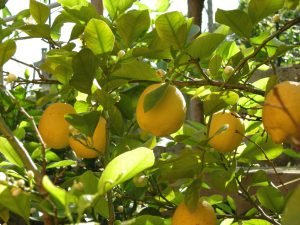Plant limes to enjoy their ineffable fragrance and great flavour

Citrus trees are without a doubt among the most popular of all ornamental plants worldwide – and with good reason. They are the ultimate horticultural multitaskers, offering beautiful flowers on a patio outdoors in summer and glossy-leaved evergreen houseplants when brought in for the winter. Of course, there’s attractive, tasty fruit, too.

And that’s before we even talk about the uplifting scent of their blossoms.

However, there is always one small caveat: the vast majority of citrus plants you can see in garden centres are oranges, lemons and the occasional clementine or mandarin – the same fruit that are incredibly easy and cheap to buy in the shops. Though, some consider that the cost of the plants easily outweighs any harvest you’d ever get. If only we picked some of the rarer varieties (there are at least 100), we could get some wonderfully unusually flavoured fruit that is essentially unbuyable in the shops – all for the same price and level of care as one of their more common cousins. So if you are thinking you would give citrus a go, here are the top three unusual plants for great flavour.
For those only familiar with the Persian lime, Citrus x latifolia, which dominates supermarket shelves, Key limes (Citrus x aurantiifolia) will be nothing short of a culinary revelation. With its thinner, more highly aromatic rind, paired with bracingly sharp juice that comes with an explosion of zesty, almost floral fragrance, there is just no comparison. It is this lime that gives really authentic Latin American food its refreshing notes and, perhaps unsurprisingly, is the essential ingredient for Florida Key lime pie. Key lime pie made without Key limes is simply not worthy of the name.

On the subject of limes, if you only have space for one citrus go for the kaffir lime, Citrus hystrix. While it produces tasty fruit whose zest is a staple of many southeast Asian dishes, it offers a second and much more generous harvest of tasty leaves, too. Used just like you do bay leaves, but with the brightest, fresh lime flavour, a single plant will provide more than you can eat all year round. Considering how eye-wateringly expensive these are to buy in the shops, how hard they are to find and how quickly they lose their flavour once harvested, when it comes to bang for your buck, there is no contest.

It will be fine if you give the super-trendy Japanese ingredient, yuzu (Citrus x junos) a go. The round, yellow fruit look like oversized mandarins, betraying part of their ancestry.

With all the fruity fragrance of the former, combined with the wild vigour of their other ancestor, the Ichang lemon of China, they are probably the hardiest fruiting citrus that can be grown. They take lows down to at least -10 C with no visible damage, and regularly fruit well. With tiny vials of the juice selling for more than £5 in fancy stores, it’s definitely worth a go. Watch out for its fearsome spines, though.
































